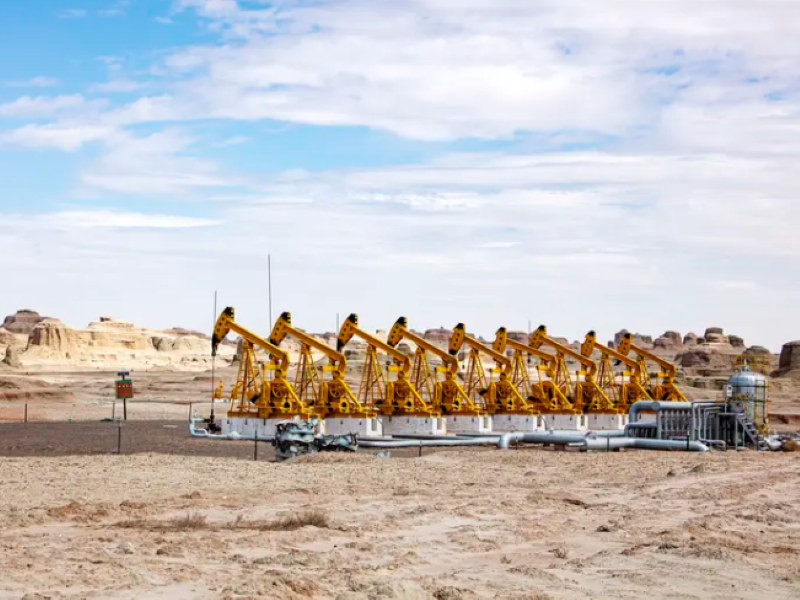Welcome to this issue's popular science column.
When you think of oil, you probably think of gas stations, cars, and fluctuations in international oil prices. But have you ever wondered what form these oil and gas, often called the "blood of industry," actually take deep underground? And how are they extracted scientifically?
It may sound a bit hardcore, but it's actually full of fascinating scientific insights. Oil reservoir physics is the microscopic study of the physical properties of rocks and fluids (oil, gas, and water) within oil and gas reservoirs, as well as their interactions and motion patterns. Today, we'll condense this complex subject into 30 easy-to-understand facts. Whether you're new to the industry or curious about the energy sector, this article will help you understand the underground oil and gas industry.
1. What is a Reservoir?
A reservoir is a rock layer that can store oil and gas and allow it to flow through it. The most common reservoir rocks are sandstone and carbonate rocks (such as limestone and dolomite).
2. What is Porosity?
Porosity refers to the percentage of pore volume in a rock to the total rock volume. It directly determines how much oil and gas a reservoir can hold. The higher the porosity, the greater the reserve potential.
3. What is Permeability?
Permeability is a physical quantity that measures the ability of a rock to allow fluids to pass through it. Only with a certain permeability can oil and gas in the pores flow under formation pressure and be produced. It is a core parameter that determines the productivity of an oil well.
4. Absolute Permeability vs. Effective Permeability vs. Relative Permeability
Absolute Permeability: The permeability measured when only one fluid exists in the rock.
Effective Permeability: The permeability of one fluid when two or more fluids (such as oil and water) exist in the rock.
Relative Permeability: The ratio of effective permeability to absolute permeability, which reflects the degree of interference between multiphase fluids.
5. What is Saturation?
Saturation refers to the volume percentage of a reservoir pore occupied by a certain fluid (oil, gas or water). For example, oil saturation refers to the proportion of pore space occupied by oil. Usually, the sum of the saturations of oil, gas and water is 100%. 6. Rock compressibility As oil and gas are produced, the formation pressure decreases, and the pressure of the overlying rock layer will compress the reservoir rock skeleton and pores. This property will affect reserve calculations and production dynamics. 7. What is wettability? Wettability refers to the tendency of liquid to spread on the rock surface in a system where oil, water and rock coexist. [1][10] Most reservoirs are hydrophilic or neutrally wet, which means that water is more easily adsorbed on the rock surface, while oil occupies the pore center, which is conducive to water injection to displace oil (water flooding). 8. What is capillary pressure? In the tiny pore throat, due to the existence of oil-water interfacial tension, an additional pressure difference will be generated, which is capillary pressure. Capillary pressure is the fundamental reason why oil and water cannot completely separate in reservoirs, forming a transition zone.

9. Crude Oil:
Underground crude oil contains a large amount of dissolved natural gas and is at high temperature and pressure. When it is brought to the surface, the pressure and temperature drop, and the dissolved gas separates, just like the gas that comes out when you open a bottle of Coke.
10. Physical Properties of Crude Oil - Different Types
Key physical properties of crude oil include density, viscosity, saturation pressure (bubble point pressure), and volume fraction.
Density: Determines the weight of the oil and is an important factor in classifying crude oil.
Viscosity: The resistance of crude oil to flow. The higher the viscosity, the more difficult it is to extract.
Saturation Pressure: The pressure point at which crude oil begins to release dissolved gas at a certain temperature.
11. What is Natural Gas?
Natural gas is primarily composed of methane, but it also contains heavier hydrocarbons such as ethane and propane, as well as non-hydrocarbon gases such as nitrogen and carbon dioxide.
12. Natural Gas "Compressibility Factor (Z)"
Under high-temperature and high-pressure underground conditions, the behavior of natural gas deviates significantly from that of an ideal gas. Scientists introduce the "compressibility factor" (also called the deviation factor Z) to modify the ideal gas equation of state, allowing for accurate calculations of its density and volume.
13. Formation Water
Almost all oil and gas reservoirs are associated with formation water. It is typically a highly mineralized brine, and its properties (such as salinity, density, and viscosity) are crucial for reservoir evaluation and development.
14. Gas Hydrate - "Combustible Ice"
Under specific high-pressure and low-temperature conditions (such as those in the deep sea or permafrost), natural gas molecules become encapsulated by water molecules, forming a white solid substance called gas hydrate, commonly known as "combustible ice."
15. Phase Behavior
The study of the states of oil and gas at different pressures and temperatures (gas, liquid, or a mixture of gas and liquid) is a core area of reservoir physics. This determines the reservoir type (e.g., black oil, volatile oil, condensate gas reservoir) and development strategy.
The next article will introduce you to the remaining 15 common sense points. Stay tuned!

